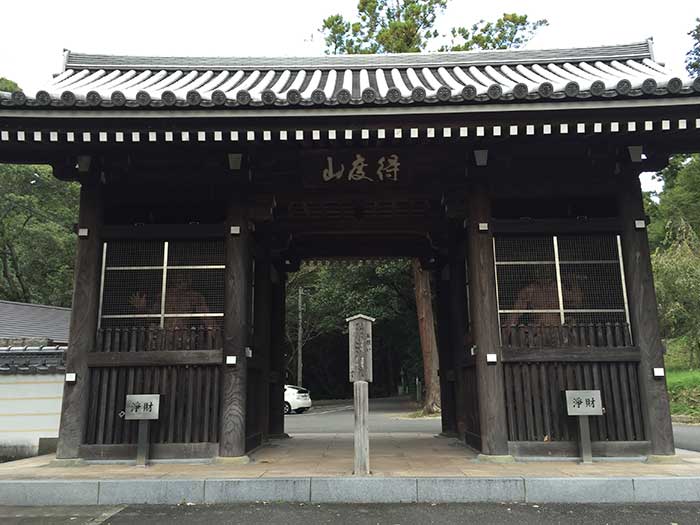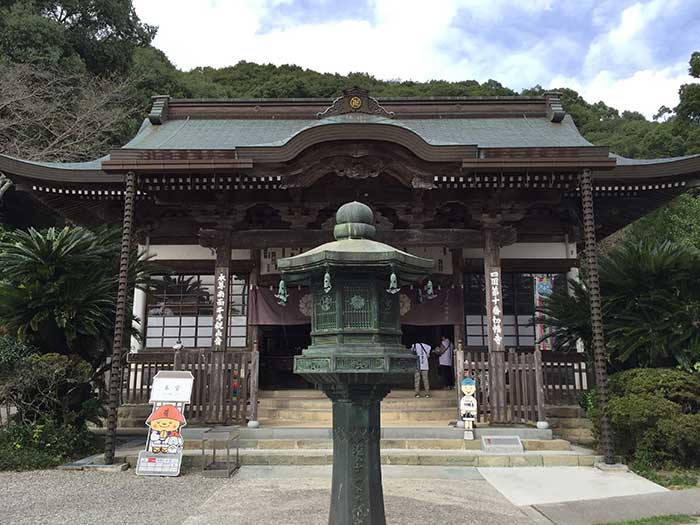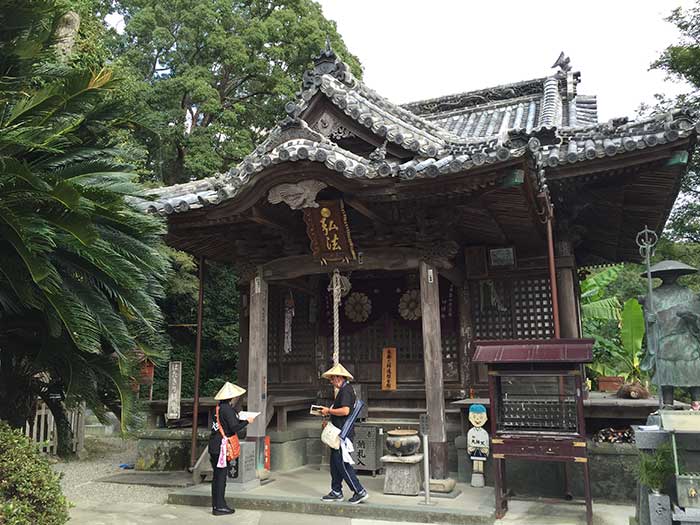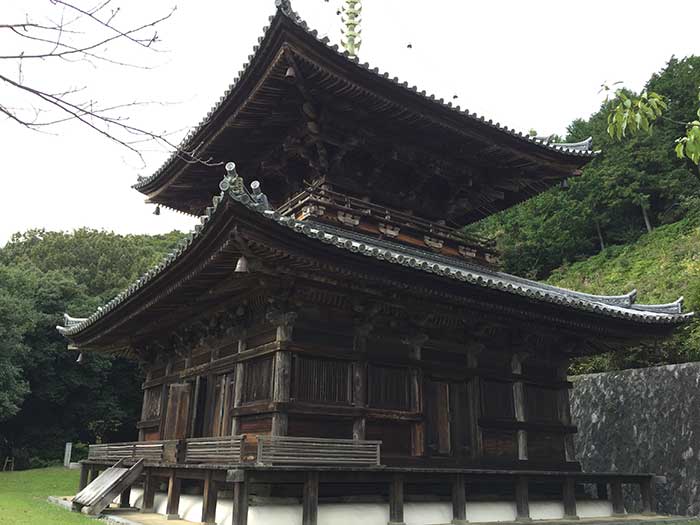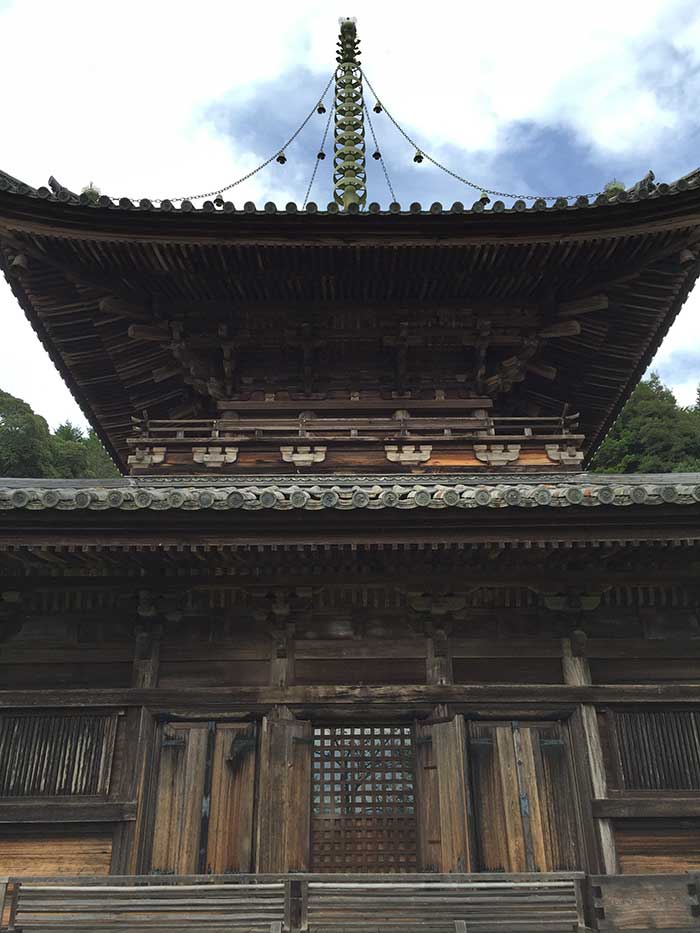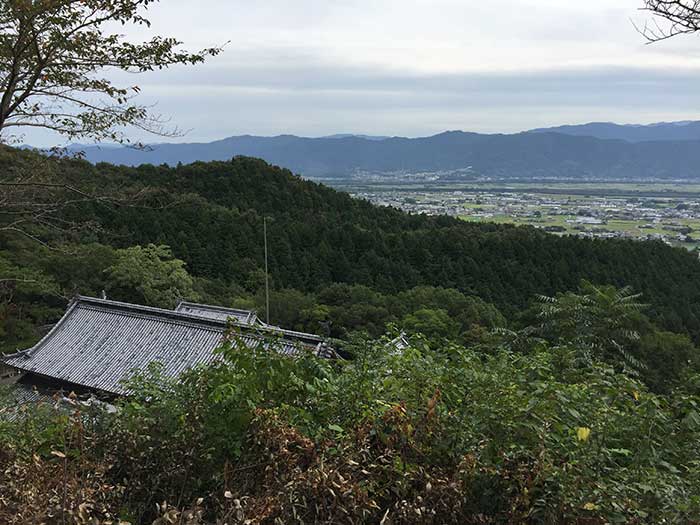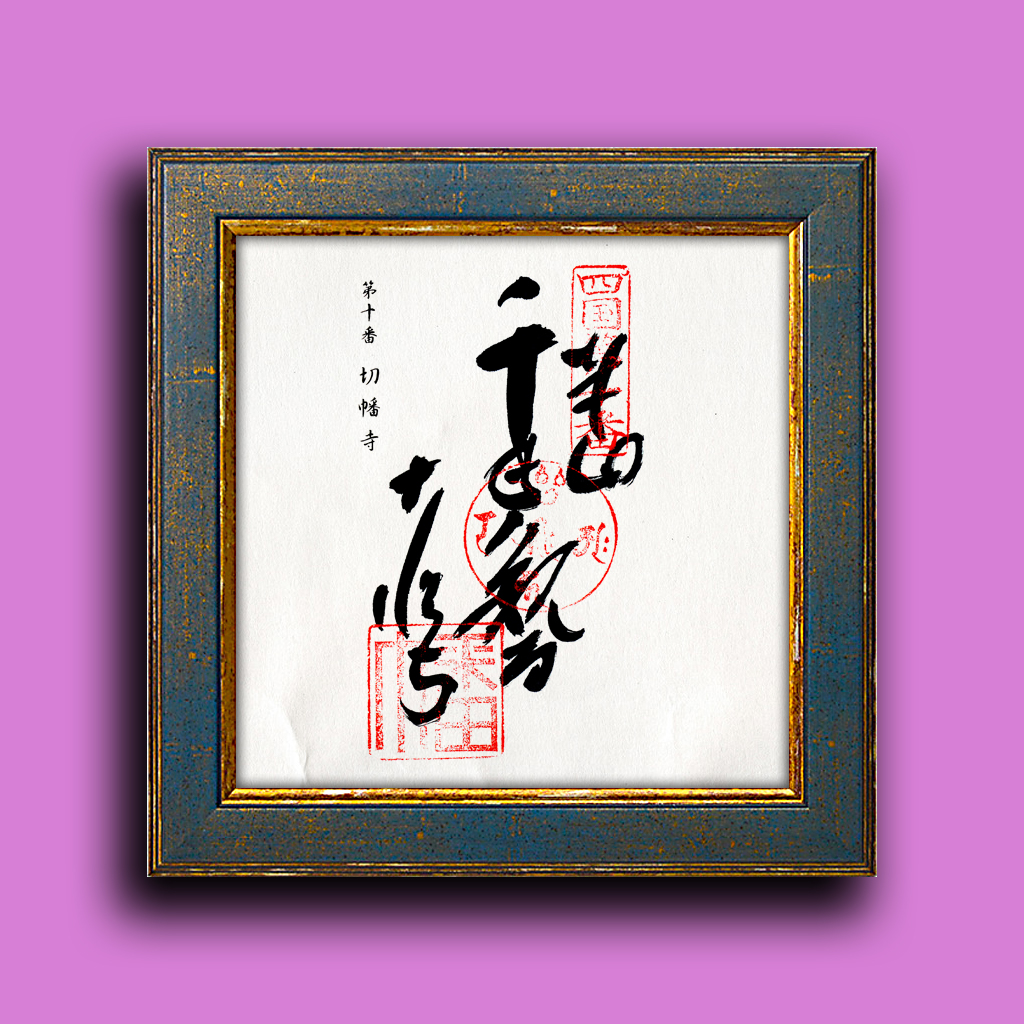Additional Information:
To get to Temple 10, you turn off the main road and walk up a very narrow lane that is packed with minshuku and shops catering to the henro. You can buy lodging, food, henro accouterments, religious items, and beautiful nōkyōchō. The nōkyōchō sold here, though, are not the books that most henro carry, but incredibly beautiful scrolls and large, 1' x 3', sheets that you frame and mount on the wall. Wholesalers buy these nōkyōchō, drive to all the temples for their stamps, and then resell them throughout the country.
Kōbō Daishi founded the temple here in honor of a girl he met while performing religious activities at a hut on the mountain. Legend states that during the seven days that he engaged in religious practices, the girl supplied all his needs and spent the rest of her time patiently weaving cloth.
After the seven days, Kōbō Daishi asked the girl for a piece of cloth to make new leggings. When she gave it, and then willingly, and without hesitation, offered more so that he could make anew robe, he asked her how she came to be there.
The girl told him that she was the daughter of a court lady who had been caught up in a palace intrigue in the capital and was pregnant with the child of a banished husband. The mother prayed to Kannon for the birth of a girl at Kiyomizudera (in Kyōto) because a girl would be protected from the repercussions of the scandal. After the girl was born, Kannon appeared to the mother and warned her to take the child and flee to Shikoku.
Moved by her story, Kōbō Daishi carved a statue of Kannon for her. When it was finished he ordained the girl as a nun and cut her hair. As soon as the girl became a nun, she became enlightened and assumed the form of Kannon herself. Kōbō Daishi took the statue up the mountain, founded this temple, and enshrined the two statues.
Because of this legend, the temple is also know as Tokudozan (The Mountain of Ordination) Kanjōjo (Temple of Abhiseka). The legend has made it popular with women.
There are 330 steps on the path up to the hondō. Although twice destroyed by fire, the temple has managed to preserve many treasures, including sutra manuscripts. The supporting statues in the hondō are Fudō Myōō and Bishamonten.
While walking in this area, Frederick Starr was stopped on the road and treated to tea, cakes, and sake. He was also given a copy of the Tokushima Mainichi which had an article about him with his picture.
Starr noted that the climb up to Temple 10 is via 330 stone steps and that the climb to the pagoda is up still even more steps. He tells the story of how Kōbō Daishi asked the girl for a piece of the cloth, which she gave with no questions and no sign of regret. When asked why she so willingly gave it, recognizing her high blood, she told how her parents had died while she was still young and that she had come at the guidance of the Buddha which she received in a dream. Therefore, Kōbō Daishi ordained her and she become a nun in order to save all persons.
